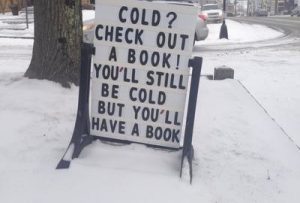
If the weather of the last week hasn’t gotten you thinking about hygge, then nothing will! Did you spend any time during the last snowstorms, cozied up on your couch with a cup of tea, a warm blanket, a good book and your loved ones? Did you binge watch your favorite TV shows? Did you go out and play in the snow? If so, congratulate yourself for your hyggelige efforts.
There’s another thing I bet many of our dear readers did to weather the storms: cook. And if hygge points exist (they don’t), then cooking and baking would earn you lots of bonus points. Personally, I made some rather tasty chocolate chip, oatmeal bars that were gobbled up rather quickly.
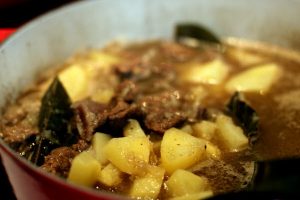
Hyggelige foods, you see, tend to not be exactly diet friendly. They are most likely what we would refer to as “comfort food.” Also very hyggelige is slow food. Fast food would probably not qualify. Turning once more to The Little Book of Hygge by Meik Wiking, we will see that he has considerately included some recipes for a few Danish favorites guaranteed to help you get your hygge on. If you want your hygge cooking to be as authentically Danish as possible, his recipes sound like a yummy place to start. Skibberlabskovs or skipper stew, braised pork cheeks in dark beer with potato-celeriac mash, boller (Danish meatballs in curry), Glogg (mulled wine) and Snobrod (twist bread) can give you a feel for the type of dishes Danes whip up on cold, snowy days.
If you’re looking for even more comfort food (personally, I don’t think there’s such a thing as too much comfort food) or you’d like to stick with some good ole’ American cuisine, the cookbook section at the library is a bottomless well of inspiration. Here are a few to check out.
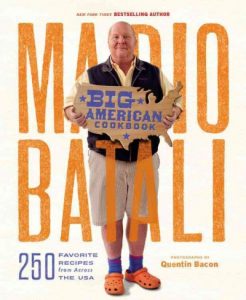 Mario Batali big American cookbook : 250 favorite recipes from across the USA. With words like state fairs, rotary clubs, cobbler, and BBQ in the book description, it’s pretty easy to tell that this one could quickly become a go-to cookbook for comfort food.
Mario Batali big American cookbook : 250 favorite recipes from across the USA. With words like state fairs, rotary clubs, cobbler, and BBQ in the book description, it’s pretty easy to tell that this one could quickly become a go-to cookbook for comfort food.
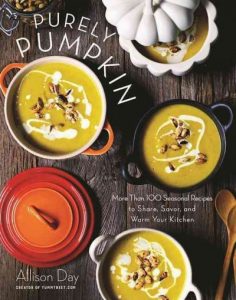 Purely pumpkin : more than 100 wholesome recipes to share, savor, and warm your kitchen by Allison Day. Call it my New England bias, but to me anything pumpkin screams “comfort food.” Allison Day’s cookbook can fulfill all your cravings for pumpkin with beverages, soups, stews, side dishes, entrees and desserts.
Purely pumpkin : more than 100 wholesome recipes to share, savor, and warm your kitchen by Allison Day. Call it my New England bias, but to me anything pumpkin screams “comfort food.” Allison Day’s cookbook can fulfill all your cravings for pumpkin with beverages, soups, stews, side dishes, entrees and desserts.
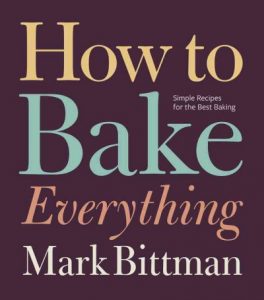 How to Bake Everything by Mark Bittman. Bread and desserts are pretty much the ultimate in hygge cooking in my opinion. And even though I’m not Danish, you may be happy to hear that Meik Wiking agrees with me: “confectionery, cake and pastries are hyggelige.” Which means that Mark Bittman, who compiles cookbooks so large that it would take to a lifetime to try out every recipe, is pretty much the King of Hygge.
How to Bake Everything by Mark Bittman. Bread and desserts are pretty much the ultimate in hygge cooking in my opinion. And even though I’m not Danish, you may be happy to hear that Meik Wiking agrees with me: “confectionery, cake and pastries are hyggelige.” Which means that Mark Bittman, who compiles cookbooks so large that it would take to a lifetime to try out every recipe, is pretty much the King of Hygge.
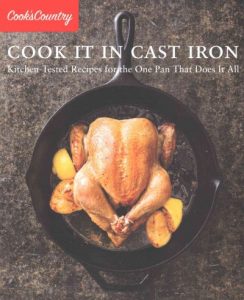 Cook it In Cast Iron. According to Cook’s Country magazine, 85% of us own a cast iron skillet. Who knew? That means many, many of us could right now be whipping up their recipes for cornbread, roasts, apple pie, cinnamon swirl bread. The only question is why aren’t we?
Cook it In Cast Iron. According to Cook’s Country magazine, 85% of us own a cast iron skillet. Who knew? That means many, many of us could right now be whipping up their recipes for cornbread, roasts, apple pie, cinnamon swirl bread. The only question is why aren’t we?
Of course, your hyggelig culinary attempts will need to be paired with equally delicious and comforting beverages. For these needs, I would suggest the following books:
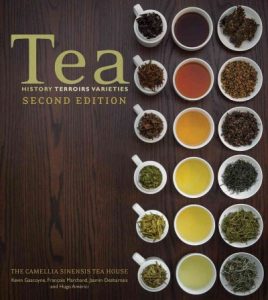 Tea: history, terroirs, varieties by Kevin Gascoyne, François Marchand, Jasmin Desharnais and Hugo Américi. This book is a tea lover’s dream. I purchased it for the West Branch’s collection and I also have a copy at home. Everything you ever needed or wanted to know about the different types of tea, where they are grown, their history, varieties and health benefits.
Tea: history, terroirs, varieties by Kevin Gascoyne, François Marchand, Jasmin Desharnais and Hugo Américi. This book is a tea lover’s dream. I purchased it for the West Branch’s collection and I also have a copy at home. Everything you ever needed or wanted to know about the different types of tea, where they are grown, their history, varieties and health benefits.
 The World’s Best Drinks: where to find them and how to make them by Victoria Moore. If you’d like a bit of global flair with your comforting drinks, this is the book for you. Containing both alcoholic and non-alcoholic options, the recipes in this Lonely Planet guide will have you whipping up Chilean Terremoto, Italian Negroni, Canadian Caesars, Turkish Aryran, Indian Mango lassi and old fashioned American egg creams.
The World’s Best Drinks: where to find them and how to make them by Victoria Moore. If you’d like a bit of global flair with your comforting drinks, this is the book for you. Containing both alcoholic and non-alcoholic options, the recipes in this Lonely Planet guide will have you whipping up Chilean Terremoto, Italian Negroni, Canadian Caesars, Turkish Aryran, Indian Mango lassi and old fashioned American egg creams.
With a number of weeks left in the winter (I’m wise enough not to speculate how many), you may want to plan ahead so you’re not caught off guard without the perfect hyggelige recipes to get you through another Nor’easter. A quick trip to the cookbook section at the PIL should be perfect to get you cooking, baking and concocting.

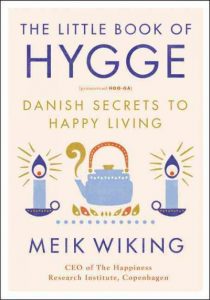 In case you’re curious, the book I was recently so distracted by is
In case you’re curious, the book I was recently so distracted by is 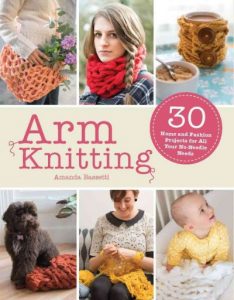 In that spirit, I have decided to spend the rest of this post encouraging you to discover how hyggeligt it can be to discover your DIY side. Those who know me might find it amusing that I am extolling you to get crafty, since that is not known to be one of my strengths. But there is something undeniably cozy about certain crafty past times. As a native Dane, Wiking agrees with me: “knitting is extremely hygge. It is a sign of ‘everything is safe’- it has a certain grandma vibe to it- and even the sound of knitting is hygge. Knitting also brings calmness to the situation and atmosphere.” If you, like many of us, could use a little extra calm, perhaps knitting will be your preferred way to experience hygge this winter. Thanks to the passion of one of our former staff members, the West Branch has a rather good collection of books on both knitting and crocheting. If you’re new to knitting, it has always seemed to me that a good place to start would be with
In that spirit, I have decided to spend the rest of this post encouraging you to discover how hyggeligt it can be to discover your DIY side. Those who know me might find it amusing that I am extolling you to get crafty, since that is not known to be one of my strengths. But there is something undeniably cozy about certain crafty past times. As a native Dane, Wiking agrees with me: “knitting is extremely hygge. It is a sign of ‘everything is safe’- it has a certain grandma vibe to it- and even the sound of knitting is hygge. Knitting also brings calmness to the situation and atmosphere.” If you, like many of us, could use a little extra calm, perhaps knitting will be your preferred way to experience hygge this winter. Thanks to the passion of one of our former staff members, the West Branch has a rather good collection of books on both knitting and crocheting. If you’re new to knitting, it has always seemed to me that a good place to start would be with 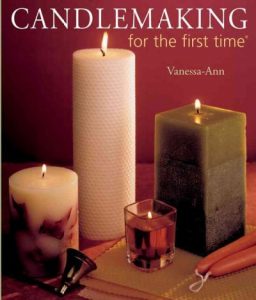 If knitting doesn’t warm your heart, you might try candlemaking. In fact, surveys show that candles are one of the items that Danes most associate with hygge. And according to Wiking, Danes consume more candles per capita than any other country on earth. So candlemaking must get very high hygge points.
If knitting doesn’t warm your heart, you might try candlemaking. In fact, surveys show that candles are one of the items that Danes most associate with hygge. And according to Wiking, Danes consume more candles per capita than any other country on earth. So candlemaking must get very high hygge points. 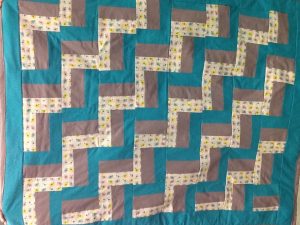
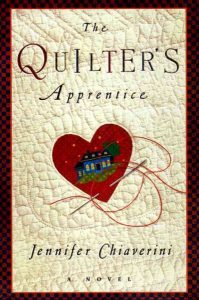 Elm Creek quilts series
Elm Creek quilts series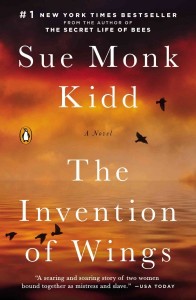
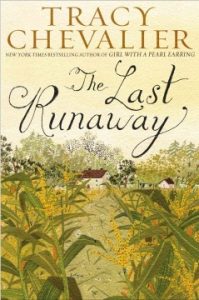

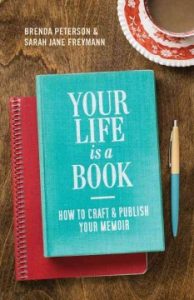 time to reminisce. Get those memories down on the page. Even if you never publish it, future generations will enjoy reading about your experiences. If you need a little guidance, check out
time to reminisce. Get those memories down on the page. Even if you never publish it, future generations will enjoy reading about your experiences. If you need a little guidance, check out 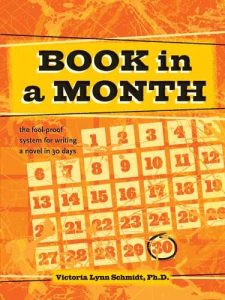 Personally I’d stick with cozy fiction (something along the lines of
Personally I’d stick with cozy fiction (something along the lines of 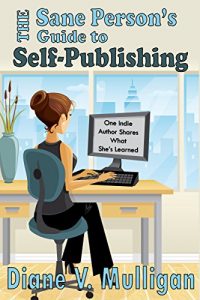 Once you’ve finished your memoir or novel, you’ll want to get your lovely book into the hands of readers, so you’ll need a plan to publish your work. You can go the traditional route and try to get your work picked up by a mainstream publisher. For tips on this option, check out the classic
Once you’ve finished your memoir or novel, you’ll want to get your lovely book into the hands of readers, so you’ll need a plan to publish your work. You can go the traditional route and try to get your work picked up by a mainstream publisher. For tips on this option, check out the classic 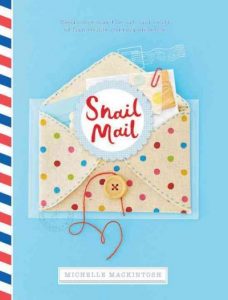 But let’s face it, writing (like reading) can often be a solitary past time. Not so with letter writing. Sometimes we just can’t be with the ones we love. Sure, there is e-mail, texting, Facebook and Skyping for virtual togetherness, but to me that lacks a certain coziness. And really, what brightens up a day more than opening your mailbox to discover a letter from a loved one, instead of just bills or requests for donations? For an extra-special sense of community, try starting your own version of an
But let’s face it, writing (like reading) can often be a solitary past time. Not so with letter writing. Sometimes we just can’t be with the ones we love. Sure, there is e-mail, texting, Facebook and Skyping for virtual togetherness, but to me that lacks a certain coziness. And really, what brightens up a day more than opening your mailbox to discover a letter from a loved one, instead of just bills or requests for donations? For an extra-special sense of community, try starting your own version of an 
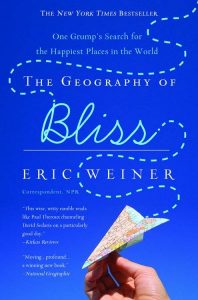 Having a pretty high standard of living, a strong social safety net, a good education system and a peaceful country certainly aren’t going to hurt people’s chances at finding happiness. But is there more to it than that? Reading
Having a pretty high standard of living, a strong social safety net, a good education system and a peaceful country certainly aren’t going to hurt people’s chances at finding happiness. But is there more to it than that? Reading 
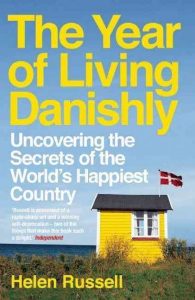 outside continues to intrigue me, so I was eager to read
outside continues to intrigue me, so I was eager to read 